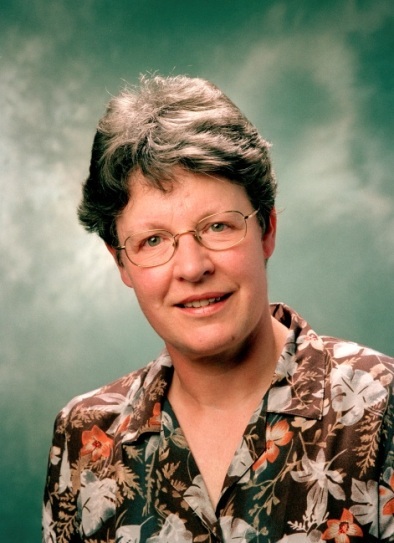Jocelyn Bell Burnell
The Most famously infamous Astronomer
The Main Idea
Jocelyn Bell Burnell, born July 15, 1943 in Belfast, Northern Ireland, is most famously known for her discovery of pulsars.
As a Ph.D. student at the University of Cambridge studying radio astronomy, Bell Burnel detected a rapid set of pulses occurring in continuing intervals on a radio telescope that she helped build during her time as a Ph.D. student. These pulses turned out to be pulsars. And with the discovery of pulsars, the existence of rapidly spinning neutron starts had its first direct piece of evidence.
Scientific Career
Jocelyn Bell Burnell earned her bachelor's degree in physics in 1965 from the University of Glasgow. She than went on to earn a Ph.D. in radio astronomy from the University of Cambridge in 1969.
At the University of Cambridge, she spent two years building a 81.5-megahertz radio telescope that was designed to track quasars. Her job was to operate the telescope and analyze the data produced by it (120 meters of chart paper produced every four days). It was during this time that she noticed unusual pulses that was the first evidence of a pulsar. She consulted her advisor Antony Hewish, and they spent months monitoring and studying these pulses. It was then determined that they were indeed pulsars.
The Nobel Prize for Physics was awarded in 1974 for the discovery of pulsars to Antony Hewish and Martin Ryle, with the omission of her name on the award. This lead to anger and outrage from the scientific community as they though this was unfair. Bell Burnell though, felt the prize was properly awarded, as she was only a student at the time of the discovery. It should be noted that gender discrimination may have been a contributing factor to her not receiving the award. Bell Burnell commented that: "It is an awful waste of time and energy to be grieving over something that you can’t do anything about,” regarding the controversy.
After graduating from the University of Cambridge, Bell Burnell went on to work on the Ariel 5 satellite, at the Mullard Space Science Laboratory at the University College London, which was launched in 1974 in order to study X-ray astronomy.
Among her many accomplishments, she became the first female president of the Institute of Physics.
Positions held
Research Council Fellow, University of Southampton, England, 1968-1970 Professor at University of Southampton, England, 1970-1973 Professor at Open University, 1973-1987 Professor at University of College London, 1974-1982 Royal Observatory, Edinburgh, 1982-1991 Dean of science at the University of Bath, 2001-2004 Commander of the Order of the British Empire, 1999 President of the Royal Astronomical Society, 2002-2004 President of the Institute of Physics, 2008-2010 President of the Royal Society of Edinburgh, 2014 - present
Faith
Bell Burnell is of the Quaker faith, she advocates the idea that faith and science can coexist. She believes that it is part of the Quaker faith to become closer to God, and her way of becoming closer to God is by observing his creations through science.
Awards and Honors
Michelson Medal, Franklin Institute, Philadelphia, 1973 Oppenheimer Prize, 1978 Beatrice M. Tinsley Prize, American Astronomical Society 1987 Herschel Medal from the Royal Astronomical Society, 1989 Jansky Award, National Radio Astronomy Observatory 1995
Honorary D.Univ., York University 1994 Honorary D.Sc. from: Heriot-Watt University 1993,University of Warwick 1995, University of Newcastle 1995, and Cambridge University 1996.
Publications
"Observation of a Rapidly Pulsating Radio Source," Nature 217: 709 (1968), with A. Hewish, J.D.H. Pilkington, P.F. Scott, and R.A. Collins. "Observations of Some Further Pulsed Radio Source," Nature 218: 126 (1968), with J.D.H. Pilkington, A. Hewish, and T.W. Cole.
Editor, Next Generation Infrared Space Observatory. Kluwer, 1992, with J.K. Davies and R.S. Stobie.
"Simultaneous millimetre and radio observations of Cygnus X-3 in quiescent radio state," Monthly Notices of Royal Astronomical Society 274: 633 (1995), with R.P. Fender, S.T. Garrington, R.E. Spencer, and G.G. Pooley.
"Flaring and quiescent infrared behaviour of Cygnus X-3," Monthly Notices of Royal Astronomical Society 283: 798 (1996), with R.P. Fender, P.M. Williams, and A.S. Webster.
"Comments on the superluminal motion in Cygnus X-3," Monthly Notices of Royal Astronomical Society 285: 187 (1997), with R.N. Ogley and S.J. Newell.
Bell, Susan Jocelyn (1943- ), Irish astronomer. In The Grolier library of international biographies. v. 8. Scientists. Danbury, Conn., Grolier Educational Corp. [1996] p. 16-18.
CT120.G76 1996, v. 8
Bell Burnell, S. Jocelyn. First love. SERC bulletin, v. 5, spring 1994: 7. col. port.
"Jocelyn Bell Burnell reveals her 'first love' - neutron stars."
External links
[[1]]
[[2]]
[[3]]
